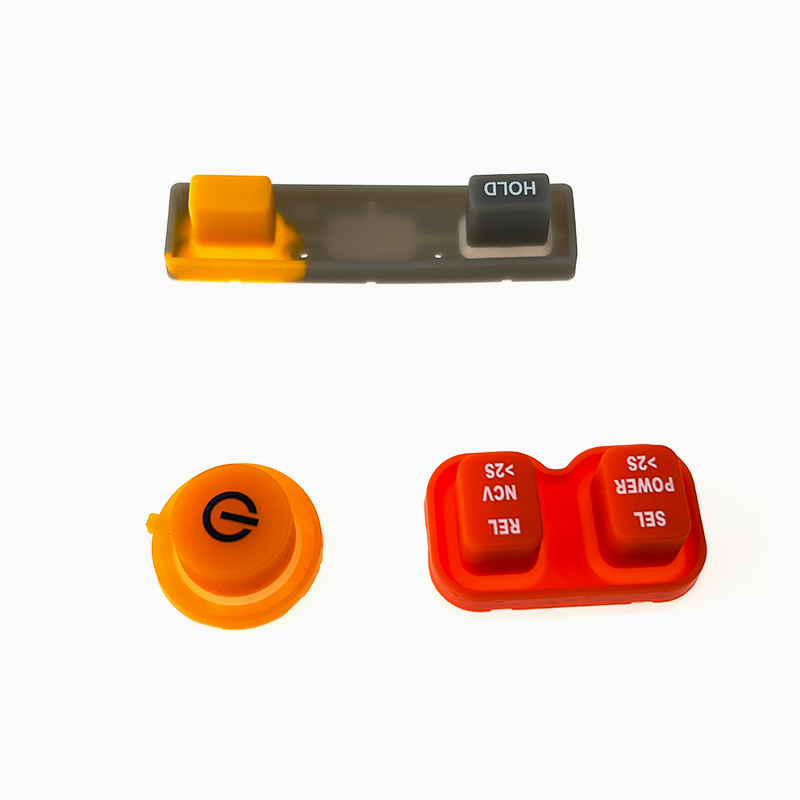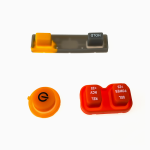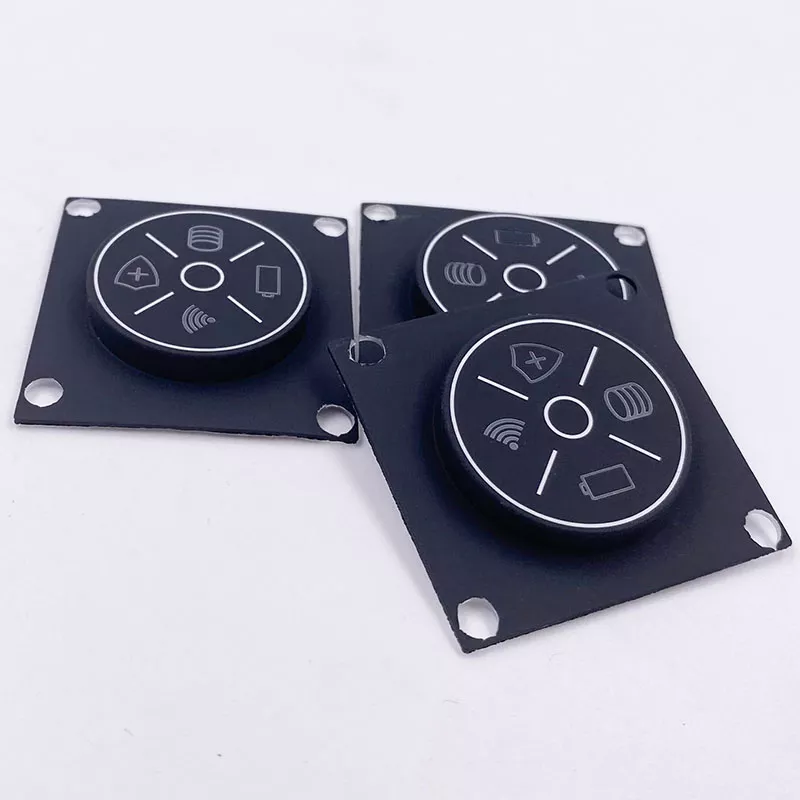Conductive silicone rubber buttons, also known as rubber button pads or silicone rubber buttons, are crafted from transparent, flexible silicone material. Molded from high-quality silicone rubber, these buttons deliver reliable switching performance and are widely used across various industries, including electrical appliances, machinery, medical equipment, remote controls, and more.
Structure of Silicone Buttons
Silicone buttons typically comprise several key components:
- Button: The main part pressed by the user.
- Button Mesh: Provides the necessary elasticity and tactile feedback.
- Silicone Pad: Offers support and cushioning.
- Button Travel: Defines the distance a button moves when pressed.
- Electrical Contacts: Ensure the electrical connection, utilizing either carbon pills or conductive ink.
These components are similar to those found in silicone keyboards, featuring elastic silicone key meshes, button pads, key tops, key covers, contact areas, surface legends, and protective layers.
Specifications
- Material: Silicone
- Color: Transparent and other colors available
- Molding Technology: Silicone Compression Molding
- Application Areas: Electronic Accessories, POS Machines, Remote Controls
- Certificates: ISO9001-2015, IATF16949
Design and Production Considerations
Designing and producing rubber buttons involves several critical factors:
- Actuation Force: The force required to press the button.
- Button Travel: The movement distance of the button when pressed.
- Contacts: The materials and design of the electrical contacts.
- Surface Requirements: Considerations for the button’s surface texture and finish.
- Material Selection: Choosing the appropriate silicone material for durability and performance.
- Hardness Variations: Ensuring the right balance of softness and rigidity.
- Interactions: How these elements work together to create a functional button.
Factors Affecting the Quality of Rubber Buttons
Contact Reliability:
The effectiveness of rubber contacts in connecting the button to the device is crucial. Conductive materials like ink and carbon pellets must offer low resistance (less than 30 ohms) to ensure good conductivity and responsiveness.
Shape of Conductive Material:
The shape and coverage of conductive ink or carbon pellets are vital. Proper coverage prevents sensitivity loss and deformation, ensuring consistent performance.
Silicone Rubber Quality:
High-strength, high-quality silicone rubber is essential for durable button construction. It must resist deformation and breakage, especially in high-use applications like piano buttons.
Compression Molding Accuracy:
The precision of the compression mold significantly impacts the button’s quality. Accurate molds ensure consistent dimensions, including button webbing and contact height, leading to reliable and uniform buttons.
Conductive silicone rubber buttons and keypads are essential components in many devices, providing reliable performance and durability. With careful consideration of design, material selection, and production processes, these buttons can meet the stringent demands of various applications, ensuring long-lasting functionality and user satisfaction.



